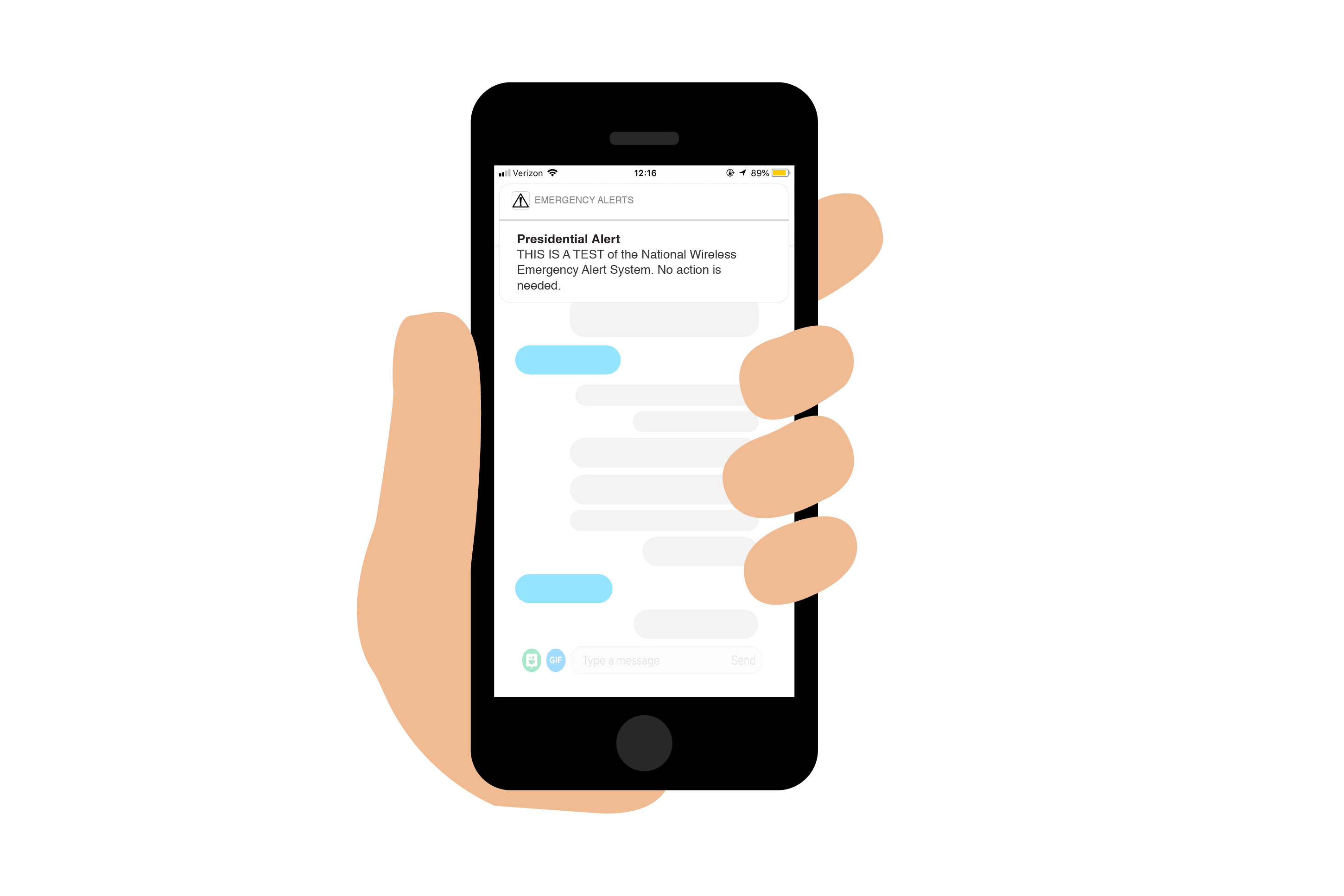“BALLISTIC MISSILE THREAT INBOUND TO HAWAII. SEEK IMMEDIATE SHELTER. THIS IS NOT A DRILL.”
After 38 minutes of panic and terror in the 50th state, news finally broke that the alert was an error. There was no threat to Hawaii on Jan. 13. It was, in fact, a drill. The missile alert in Hawaii seemed to be effective in informing the public, despite being a false alarm. (The alert was incorrectly labelled as a real threat — “This is not a drill!” — by an employee at the Hawaiian Emergency Management Agency.)
On Oct. 3, 225 million smartphones received a “Presidential Alert,” which is a notification in the same vein as Emergency Alert System broadcasts like AMBER Alerts or the missile alert in Hawaii.
A similar situation appeared in September’s season eight premiere of American Horror Story: Apocalypse. Alerts appeared on characters’ phones, like the real-world message in Hawaii. A threat of ballistic missiles was inbound to Los Angeles, and chaos ensued. One character quipped that the alert was a false alarm, referencing Hawaii. But the show depicted what might happen during a real threat: one that begins with an alert on a phone and ends with a bomb.
People jumped off buildings, looted stores, killed one another, only to be caught in the inevitable atomic blast. AHS has become truly terrifying. Scary stories of ghosts, witches and demons pale in comparison. The fear from the blast scene was too tangible.
Threats of nuclear or ballistic devastation have become too real. With a president known for his political volatility and ability to reach the public, a notification could signal nuclear war tomorrow.
In tweets and texts compiled by Business Insider, the reaction to the alert in Hawaii was exactly like the one depicted in American Horror Story.
“It was mass chaos people getting out of cars and running and looking at the sky…” one text read.
Reality and fiction have become equally as horrifying, and the current administration has aggravated this fear. The President has boasted about his accessibility to the nuclear codes. He has also maintained a less-than-consistent relationship with Kim Jong Un, leader of North Korea.
At the beginning of the year, President Trump tweeted, comparing nuclear power with North Korea.
North Korean Leader Kim Jong Un just stated that the “Nuclear Button is on his desk at all times.” Will someone from his depleted and food starved regime please inform him that I too have a Nuclear Button, but it is a much bigger & more powerful one than his, and my Button works!
— Donald J. Trump (@realDonaldTrump) January 3, 2018
In September, Trump tweeted his support for Kim Jong Un:
Kim Jong Un has agreed to allow Nuclear inspections, subject to final negotiations, and to permanently dismantle a test site and launch pad in the presence of international experts. In the meantime there will be no Rocket or Nuclear testing. Hero remains to continue being……..
— Donald J. Trump (@realDonaldTrump) September 19, 2018
Trump’s commitment to de-nuclearization is always changing, and it seems as though the only source for information on Trump’s relationship with Kim is through the President’s Twitter feed.
In either case of peace or a more violent end, how easily can a warning of strike be broadcast?
The October test by the The Emergency Alert System read, “This system was developed by broadcast and cable operators in voluntary cooperation with the Federal Emergency Management Agency, the Federal Communications Commission, and local authorities to keep you informed in the event of an emergency.”
The presidential alerts do not come directly from Donald Trump, however. The Federal Emergency Management Agency, or FEMA, said that these messages are broadcast on behalf of the President, according to Time.
Due to the tumult of a nuclear threat, the system needs to be radically changed. By associating national alerts with the president, the trueness of the alerts will be questioned.
By creating a presidential alert, if only in name, national emergencies become politicized.
Creating a partisan-fronted system to reach Americans without consent reeks of an Orwellian dystopia, even if Trump doesn’t press “send” himself.
And even if there is great distance between the president and these alerts, how can Americans be sure that there is no political manipulation of the broadcasts?
When the long tones emanate from an iPhone, will it be an Amber Alert? A tornado warning? A message from Trump? Or a message that warns of nuclear catastrophe?
The use of smart phones to distribute this information may seem like the best way to reach every American, but after the panic created after the alert mishap in Hawaii, this method may not be most effective.
If the only way to deliver such information to the public is through phones, then what is alert-worthy has to be reconsidered.
The horrors of TV are now becoming more and more realistic due to the current political climate. If we are to keep faith in a national security system, precautions must be taken. Otherwise, misuse by the government could lead to widespread hysteria.
Illustration by Rowen Griffith







